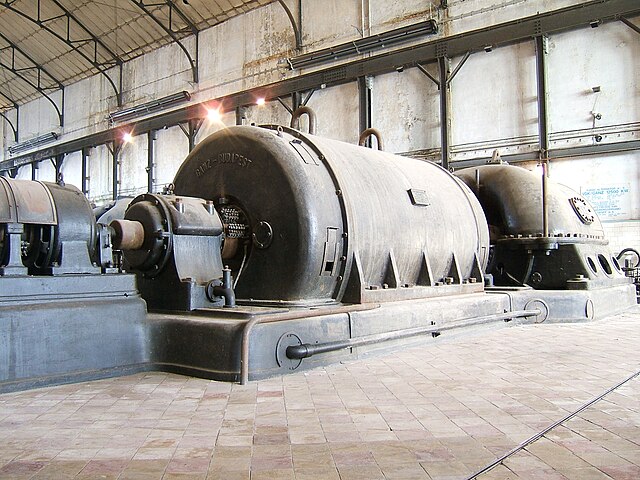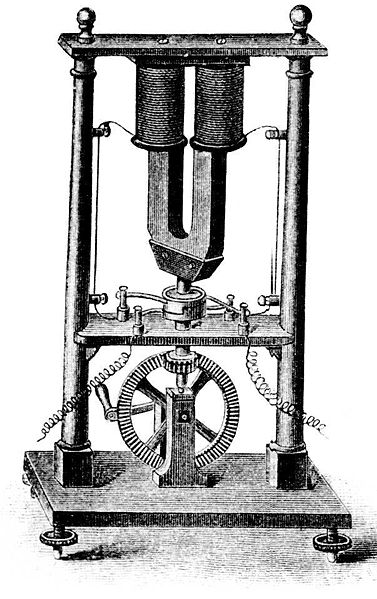An alternator is an electrical generator that converts mechanical energy to electrical energy in the form of alternating current. For reasons of cost and simplicity, most alternators use a rotating magnetic field with a stationary armature. Occasionally, a linear alternator or a rotating armature with a stationary magnetic field is used. In principle, any AC electrical generator can be called an alternator, but usually the term refers to small rotating machines driven by automotive and other internal combustion engines.
Alternators made in 1909 by Ganz Works in the power generating hall of a Russian hydroelectric station (photograph by Prokudin-Gorsky, 1911).
Alternator mounted on an automobile engine with a serpentine belt pulley (belt not present.)
In electricity generation, a generator is a device that converts motion-based power or fuel-based power into electric power for use in an external circuit. Sources of mechanical energy include steam turbines, gas turbines, water turbines, internal combustion engines, wind turbines and even hand cranks. The first electromagnetic generator, the Faraday disk, was invented in 1831 by British scientist Michael Faraday. Generators provide nearly all the power for electrical grids.
U.S. NRC image of a modern steam turbine generator (STG).
Early Ganz Generator in Zwevegem, West Flanders, Belgium
The Faraday disk was the first electric generator. The horseshoe-shaped magnet (A) created a magnetic field through the disk (D). When the disk was turned, this induced an electric current radially outward from the center toward the rim. The current flowed out through the sliding spring contact m, through the external circuit, and back into the center of the disk through the axle.
Hippolyte Pixii's dynamo. The commutator is located on the shaft below the spinning magnet.






